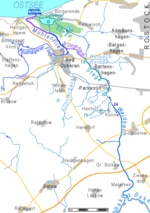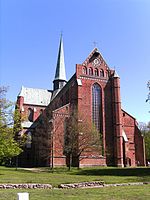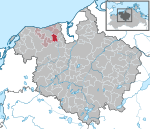Nienhagen, Mecklenburg-Vorpommern
Municipalities in Mecklenburg-Western PomeraniaPopulated coastal places in Germany (Baltic Sea)Rostock (district) geography stubs

Nienhagen is a municipality in the Rostock district, in Mecklenburg-Vorpommern, Germany.
Excerpt from the Wikipedia article Nienhagen, Mecklenburg-Vorpommern (License: CC BY-SA 3.0, Authors, Images).Nienhagen, Mecklenburg-Vorpommern
An der alten Schule, Bad Doberan-Land
Geographical coordinates (GPS) Address Nearby Places Show on map
Geographical coordinates (GPS)
| Latitude | Longitude |
|---|---|
| N 54.166666666667 ° | E 11.966666666667 ° |
Address
An der alten Schule
18211 Bad Doberan-Land
Mecklenburg-Vorpommern, Germany
Open on Google Maps










